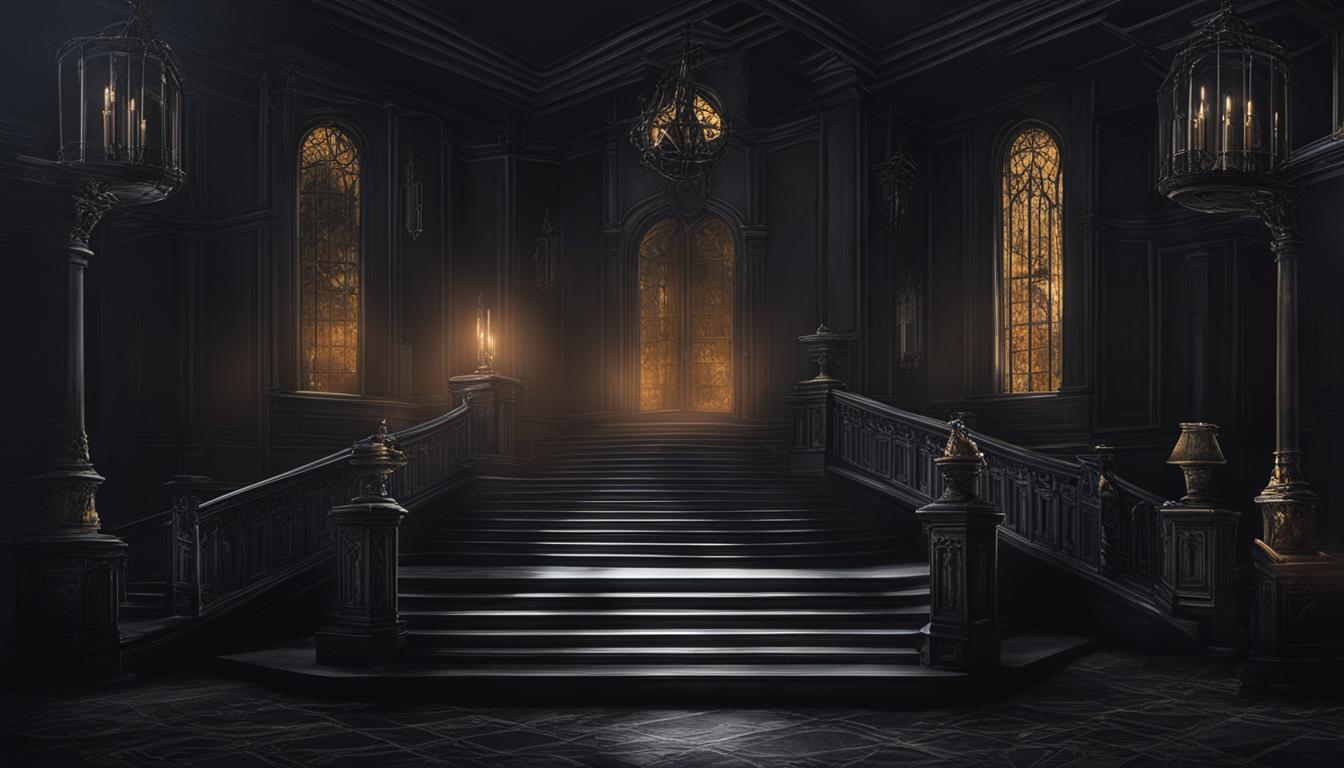If you’re a fan of suspenseful storytelling and gothic fiction, then “The Thirteenth Tale” by Diane Setterfield is a must-read (or listen). In this comprehensive audiobook review, we’ll explore Setterfield’s gripping tale of family secrets and literary intrigue.
Over the course of this article, we’ll delve into the various aspects that make “The Thirteenth Tale” such a captivating read. From a plot summary and character analysis to an exploration of the gothic suspense genre and an evaluation of the audiobook performance, we’ll provide an in-depth look at Setterfield’s skillful storytelling.
So settle in with a cup of tea and get ready to immerse yourself in the world of “The Thirteenth Tale.”
Introduction to “The Thirteenth Tale”
Diane Setterfield’s “The Thirteenth Tale” is a haunting and beautifully written novel that has captivated readers since its initial release in 2006. The novel belongs to the gothic suspense genre, immersing readers in a tale of mystery, intrigue, and family secrets. The book has since been adapted into an audiobook format, allowing readers to experience the story in a new and unique way.
The Thirteenth Tale centers around Margaret Lea, a quiet and unassuming biographer who is summoned by the famous but reclusive novelist Vida Winter to write her life story. As Margaret delves deeper into Vida’s past, she uncovers a web of secrets and lies, including a mysterious thirteenth tale that Vida has never shared with anyone. The story takes place in a haunting and atmospheric setting, drawing readers into the novel’s immersive world.
Over the years, “The Thirteenth Tale” has become a beloved classic, inspiring countless readers and earning critical acclaim. Its gothic suspense and masterful storytelling have made it a must-read for any fan of the genre. In the following sections, we will explore the plot, characters, writing style, and more of this timeless novel.
Plot Summary of “The Thirteenth Tale”
In “The Thirteenth Tale,” biographer Margaret Lea is approached by the reclusive author Vida Winter to write her life story. As Margaret delves into Vida’s past, she discovers dark secrets and a family tragedy that has haunted Vida throughout her life. Meanwhile, Margaret herself is struggling with her own personal demons and finds solace in uncovering Vida’s past.
The story unfolds through a series of flashbacks and present-day revelations, as Margaret uncovers the truth about Vida’s haunted past and the connection it holds to her own. Along the way, Margaret must navigate complex family relationships, literary intrigue, and a haunting Gothic atmosphere that pervades the narrative.
The plot of “The Thirteenth Tale” twists and turns, with unexpected revelations and emotional revelations throughout. From the tragedy at the heart of Vida’s family to the unexpected connections between characters, the story is a masterfully crafted exploration of love, loss, and the power of storytelling.
Setting and Atmosphere in “The Thirteenth Tale”
In “The Thirteenth Tale,” Diane Setterfield creates a hauntingly beautiful setting that expertly sets the tone for the novel’s gothic nature. The story takes place in a remote English countryside estate, where the moors, mist, and secrets seem to wrap the characters up in an eerie embrace. The setting serves as a metaphor for the secrets and past histories of the characters, as well as a character in its own right, evocative and potent.
The atmospheric elements in Setterfield’s novel are equally effective, with a pervasive feeling of mystery and unease that permeates throughout, creating a palpable sense of dread and suspense. The author’s integration of gothic elements, such as ghosts, old mansions with mysterious pasts, and hidden secrets lurking around every corner, make for a rich and immersive reading experience.
Through her exquisite prose, Setterfield brings to life a world that feels both familiar and otherworldly. The setting and atmosphere are integral to the success of the novel, perfectly complementing the story’s themes of family secrets, hidden pasts, and the power of storytelling.
Character Analysis in “The Thirteenth Tale”
“The Thirteenth Tale” boasts a cast of complex and intriguing characters whose motivations and actions drive the story forward.
The protagonist, Margaret Lea, is a bookworm and aspiring writer who is asked to write the biography of Vida Winter, a reclusive author with a mysterious past. As Margaret delves deeper into Vida’s life, she discovers a web of secrets and lies that threaten to unravel the very fabric of her own reality.
Vida Winter, on the other hand, is a larger-than-life figure whose stories have captivated readers for decades. As Margaret uncovers the truth behind Vida’s tales, she realizes that the author’s own life has been a tragic and heartbreaking journey. Through Vida’s character, Setterfield explores themes of loss, grief, and redemption, painting a vivid portrait of a woman haunted by her past.
The supporting cast of “The Thirteenth Tale” also contributes to the overall atmosphere and theme of the story. Aurelius and Isabelle are Vida Winter’s estranged siblings, with hidden agendas and unresolved family dynamics. Hester Barrow, the governess of the Angelfield estate where Vida and her siblings grew up, is a enigmatic figure whose influence extends far beyond her own lifetime. Through these characters, Setterfield creates a sprawling, interconnected narrative that keeps readers and listeners engaged until the very end.
Writing Style and Language in “The Thirteenth Tale”
One of the defining features of “The Thirteenth Tale” is Diane Setterfield’s exquisite writing style and use of language. Setterfield’s prose is rich and vivid, with intricate descriptions that transport the reader to the gothic setting of the story.
Her use of figurative language, such as metaphors and similes, adds depth and complexity to the narrative, allowing for a more immersive reading experience. For example, when describing the vastness of Angelfield House, Setterfield writes, “the hallway stretched out ahead of me like a pale ribbon, vanishing in the distance.”
Furthermore, Setterfield’s writing style allows for the exploration of complex themes and emotions within the story. Her use of multiple narrators and non-linear storytelling enhances the reader’s understanding of the characters’ motivations and struggles.
Overall, Diane Setterfield’s writing style and language in “The Thirteenth Tale” are integral to the success of the novel and its impact on readers. It is a testament to her skill as a writer that the themes and emotions of the story are so effectively conveyed through her prose.
Themes and Symbolism in “The Thirteenth Tale”
In “The Thirteenth Tale,” Diane Setterfield masterfully weaves together various themes and symbolism to create a truly mesmerizing narrative. One of the central themes of the novel is family secrets and the impact they have on both present and future generations. This is exemplified through the characters of Margaret and Vida Winter, who are bound together by a shared family history filled with secrets and tragedies.
Another prominent theme in the book is the power of storytelling itself. Through the characters of Margaret and Vida, Setterfield explores the importance of storytelling in preserving personal and cultural histories, as well as in providing comfort and understanding in difficult times. The book’s intricate and mysterious plot itself can be seen as a metaphor for the power of storytelling to both reveal and obscure truths.
The symbolism present in “The Thirteenth Tale” adds yet another layer of meaning to the already complex narrative. One of the most prominent symbols is the Thirteen Tales, which represents the idea that there is always more than one version of truth, just as there are multiple tales told throughout the book. The idea of twins is also explored through the characters of Emmeline and Adeline, who represent both the duality of human nature and the idea of hidden identities.
Themes and Symbolism in “The Thirteenth Tale”
| Themes | Symbolism |
|---|---|
| Family secrets | Thirteen Tales |
| The power of storytelling | The book’s intricate and mysterious plot |
| Twins (Emmeline and Adeline) |
Overall, the themes and symbolism in “The Thirteenth Tale” contribute to a rich and multi-layered reading experience that will leave readers pondering its meaning and messages long after the final page has been turned.
Audiobook Narration and Performance
The audiobook narration and performance of “The Thirteenth Tale” plays a crucial role in delivering the atmospheric and suspenseful story to listeners. The audiobook is narrated by Ruthie Henshall and Lynn Redgrave, whose voices complement each other well. Henshall’s narration provides a calm and soothing tone, while Redgrave’s voice brings a sense of urgency and tension to the story.
The performance of the audiobook adds an extra layer of depth to the characters, making them more relatable and dynamic. The narrators’ inflections and tone of voice bring alive the characters’ emotions and personalities. The pacing of the narration is consistent throughout the audiobook, allowing listeners to follow the story without confusion.
The sound quality of the audiobook is exceptional, enhancing the experience of the setting and atmosphere of the story. The ambiance of the settings is brought to life with the use of subtle sound effects, such as the sound of a fire burning or the rustling of leaves. Overall, the audiobook version of “The Thirteenth Tale” is a masterful performance that takes the storytelling experience to a whole new level.
Audience Reception and Reviews
Since its publication, “The Thirteenth Tale” has received widespread critical acclaim, with both readers and listeners praising Setterfield’s masterful storytelling and use of gothic suspense.
On popular review website Goodreads, “The Thirteenth Tale” has an average rating of 3.96 out of 5 stars, with over 450,000 ratings and 30,000 reviews. Positive reviews commend the book’s engaging plot, well-developed characters, and hauntingly atmospheric setting, while negative reviews often criticize its slow pacing and convoluted plot twists.
Similarly, the audiobook version of “The Thirteenth Tale” has also received positive feedback, with many reviewers praising the narrator’s skillful performance and ability to capture the story’s emotional depth.
Notable Reviews:
| Publication | Review Excerpt |
|---|---|
| The New York Times | “With intelligence and skill, Setterfield weaves the two stories together, comparing and contrasting Merrily’s life to that of her inspiration, and twists and surprises emerge as she expertly plays with our expectations.” |
| Publishers Weekly | “Setterfield’s star is on the rise, and this intricate, mysterious, and synapse-warping novel is sure to be a breakout book club favorite.” |
| Library Journal | “This remarkable debut novel, full of sibling rivalry, romance, and unsolved mysteries, is sure to keep readers captivated until the very end.” |
Comparisons between the Audiobook and the Printed Version

While both the audiobook and printed version of “The Thirteenth Tale” offer a captivating reading experience, there are distinct advantages and disadvantages to each format to consider.
| Audiobook | Printed Version | |
|---|---|---|
| Accessibility | Can easily listen while driving, exercising or doing other tasks. | Requires adequate lighting and a physical copy of the book. |
| Narration | Can enhance the overall experience with professional narration and voice acting. | Reader may have different interpretations of the characters and their dialogue. |
| Pace | Listeners must keep up with the pace of the narrator and may miss small details if not paying attention. | Readers can take their time and reread passages as necessary to fully absorb the story. |
| Imagery | Listeners must rely on their own imagination to visualize settings and scenes. | Printed version offers rich, descriptive language to fully immerse readers in the story’s atmosphere. |
Overall, both formats have their own unique strengths and weaknesses, and it ultimately comes down to personal preference. Audiobooks offer convenience and a multi-sensory experience, while printed versions allow for a more immersive and personalized reading experience.
Impact and Influence of “The Thirteenth Tale”
The Thirteenth Tale, with its gripping gothic suspense and masterful storytelling, has had an undeniable impact and influence within the literary world. Its success can be attributed to several factors, including its haunting atmosphere, multi-dimensional characters, and intricate plot.
The novel’s impact is evident in its critical and commercial success, having sold over 3 million copies worldwide. Its influence has permeated the genre of gothic suspense, inspiring other authors to incorporate similar themes and motifs into their own works.
Within the literary community, The Thirteenth Tale has also sparked discussions and debates surrounding various themes and concepts, further cementing its legacy as a thought-provoking work of fiction.
Overall, The Thirteenth Tale continues to impact and influence readers and writers alike, proving its enduring relevance and importance within the realm of gothic suspense and storytelling.
Analysis of the Gothic Suspense Genre in “The Thirteenth Tale”
Diane Setterfield’s “The Thirteenth Tale” is a masterful example of the gothic suspense genre, weaving together atmospheric elements and intricate storytelling to create a gripping and haunting narrative. In this section, we will analyze the key characteristics of the gothic suspense genre used in “The Thirteenth Tale” and examine how Setterfield’s use of these elements contributes to the overall story.
One of the most distinctive features of the gothic suspense genre is its focus on creating a dark, foreboding atmosphere that heightens the tension and sense of unease for the reader or listener. “The Thirteenth Tale” makes full use of this element, transporting the audience to the isolated and eerie Angelfield House, where the story unravels through the eyes of the protagonist, Margaret Lea. Setterfield’s use of vivid sensory details such as the creaking of floorboards and rustle of leaves adds a palpable sense of dread to the story, making it difficult to put down or stop listening to.
The gothic suspense genre also often features elements of mystery, secrets, and past trauma, all of which Mirror the main plot of “The Thirteenth Tale.” The story revolves around a famed reclusive author, Vida Winter, approached to tell her life story to Margaret Lea, a young biographer. The secrets, trauma, and hidden pasts of both characters and other secondary characters, all of which contribute to the suspenseful atmosphere of the story. With its intricate mysteries and surprises, the narrative engrosses the audience from beginning to end.
Another hallmark of the gothic suspense genre is its depiction of complex characters who often have dark pasts or inner demons. “The Thirteenth Tale” is no exception, featuring characters that embody this trait in various ways. As the story progresses, the audience is exposed to the intricate and twisted pasts of Vida Winter, her family, and other characters, with Margaret herself also having a troubled history that is gradually revealed throughout the narrative. This makes for a layered, thought-provoking story with complex character studies that shine through and add to the emotional appeal of the work.
In summary, “The Thirteenth Tale” expertly employs the classic elements of gothic suspense to produce a haunting and unputdownable story, as depressing and thrilling as a good gothic novel should be. Its atmospheric setting, complex characters, and intricate plot twists work perfectly together, creating a suspenseful and gripping listening experience.
Unanswered Questions and Ambiguities in “The Thirteenth Tale”

While “The Thirteenth Tale” is certainly a gripping and satisfying read, there are still some unanswered questions and ambiguities that may leave readers craving more answers. For example, the story’s enigmatic characters and intricate plot twists leave certain details open to interpretation, creating a sense of mystery and intrigue that may frustrate some readers.
One of the most significant unanswered questions in the novel revolves around the identity of Aurelius, a central figure in protagonist Margaret Lea’s investigation into the Vida Winter’s past. Despite several hints and clues throughout the story, the true identity and motives of Aurelius remain shrouded in mystery, leaving readers to form their own conclusions.
Additionally, the character of Charlie, who serves as a significant antagonist throughout much of the novel, is never fully explored in terms of his backstory and motivations, leaving readers wondering precisely what drives his actions. Similarly, the nature of the relationship between Margaret Lea and her mother, Aurelia, is only vaguely hinted at, leaving readers to piece together the details of their complex and troubled history.
Overall, while the unresolved queries and ambiguities in “The Thirteenth Tale” may frustrate some readers, they ultimately add to the overall atmosphere of the novel, creating a sense of suspense and intrigue that keeps audiences engaged until the very end.
Criticisms and Controversies
Despite widespread critical acclaim, “The Thirteenth Tale” is not without its share of criticisms and controversies. Some readers and listeners have found fault with certain aspects of the story, while others have taken issue with its themes and the way they are presented.
One common criticism is that the novel’s ending feels rushed and confusing, leaving some readers unsatisfied with the resolution. Others have found fault with the pacing of the story, which can be slow-moving at times and may not appeal to readers seeking fast-paced action.
Additionally, there have been controversies surrounding the accuracy and representation of mental illness in the book, with some critics arguing that certain portrayals are stigmatizing or inaccurate.
Despite these criticisms and controversies, “The Thirteenth Tale” remains a beloved work of literature that has captured the imaginations of many readers and listeners.
Similar Recommendations for Fans of “The Thirteenth Tale”
If you enjoyed “The Thirteenth Tale” by Diane Setterfield and are looking for similar recommendations, consider the following:
| Book/Audiobook Title | Author | Similar Themes/Styles |
|---|---|---|
| “Rebecca” | Daphne du Maurier | Gothic suspense, haunting atmosphere, mysterious protagonist |
| “The Silent Patient” | Alex Michaelides | Psychological thriller, unreliable narrator, shocking twists |
| “The Shadow of the Wind” | Carlos Ruiz Zafón | Gothic mystery, book lovers, atmospheric Barcelona |
These recommendations share similar themes and styles found in “The Thirteenth Tale,” such as gothic atmosphere, intriguing plot twists, and mysterious protagonists. They are sure to captivate and delight fans of the genre.
Conclusion
In conclusion, “The Thirteenth Tale” by Diane Setterfield is a captivating audiobook that expertly blends gothic suspense and masterful storytelling. Setterfield’s intricate plot, atmospheric setting, and well-developed characters make for a thrilling listening experience that is sure to engage fans of the genre. The audiobook’s narration and performance only add to the overall impact, creating a truly immersive experience for the listener.
Although there may be some unanswered questions and ambiguities throughout the story, these only serve to add to the enigmatic and mysterious nature of the plot. Additionally, while there may be some criticisms and controversies surrounding the book, these do not detract from its overall impact and influence within the literary world.
For those who enjoyed “The Thirteenth Tale,” we recommend exploring other books and audiobooks within the gothic suspense genre, such as “Rebecca” by Daphne du Maurier and “The Silent Companions” by Laura Purcell. Overall, “The Thirteenth Tale” is a must-read (or listen) for any fans of gothic suspense and storytelling.



